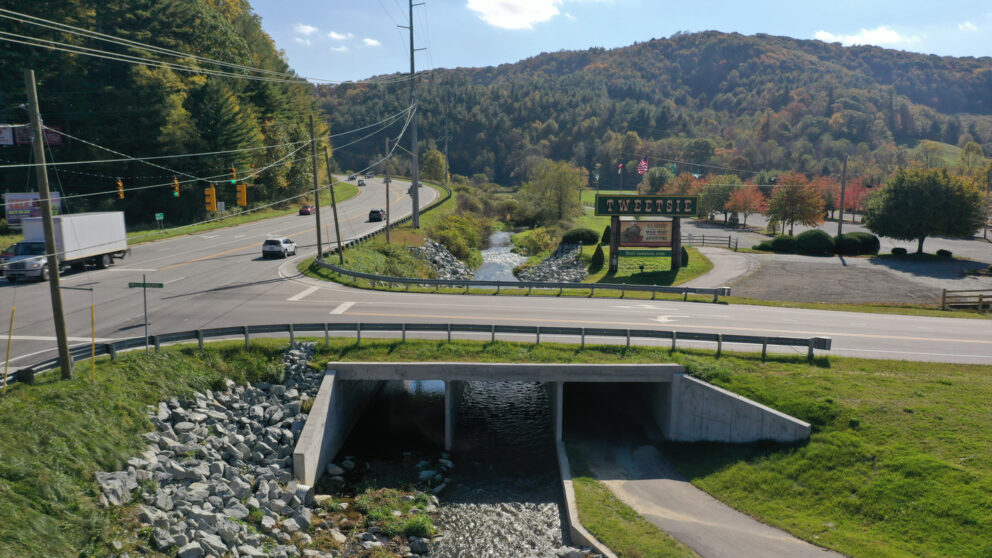
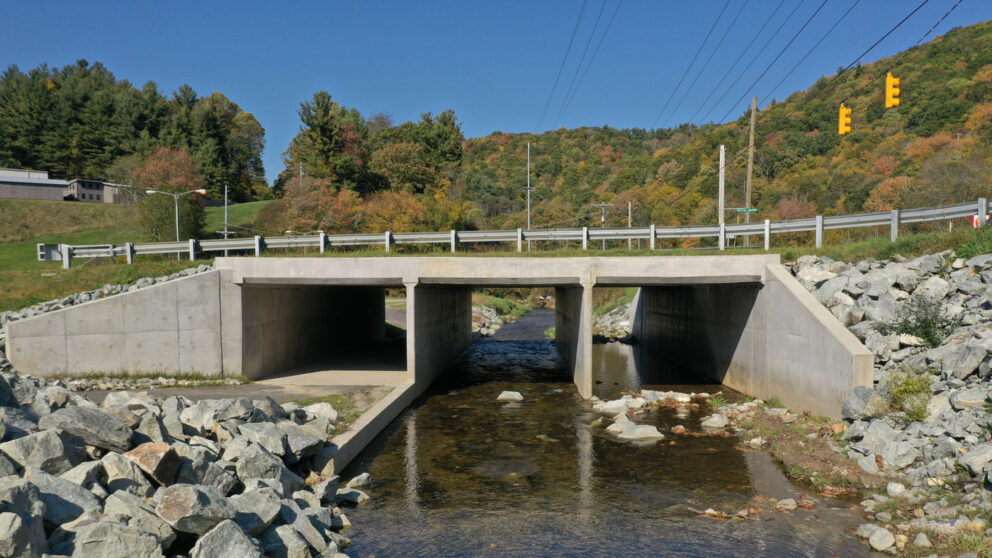
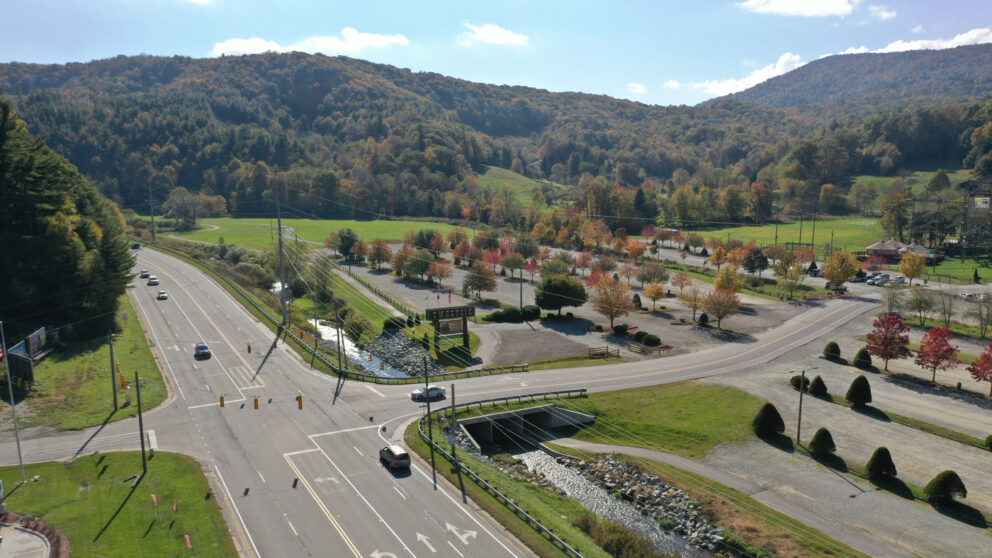
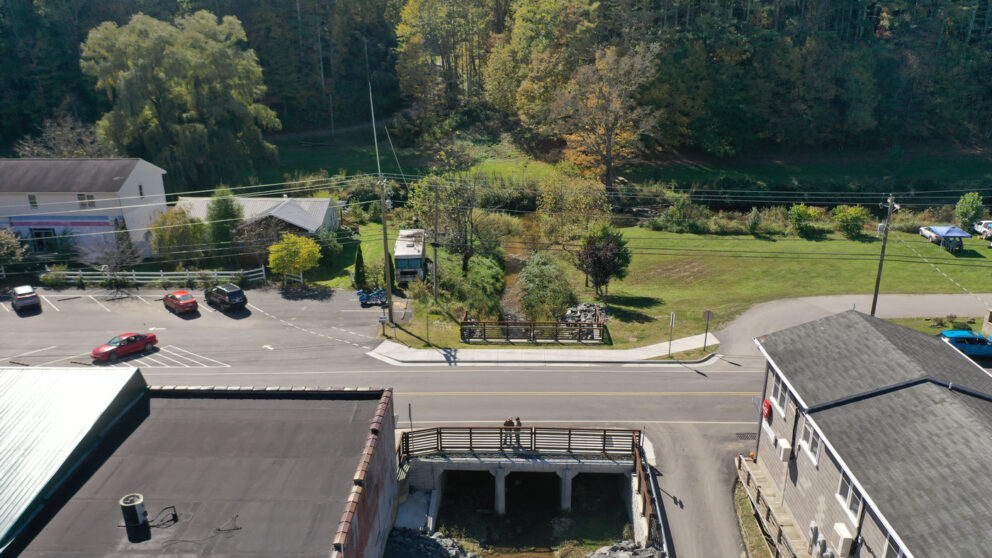
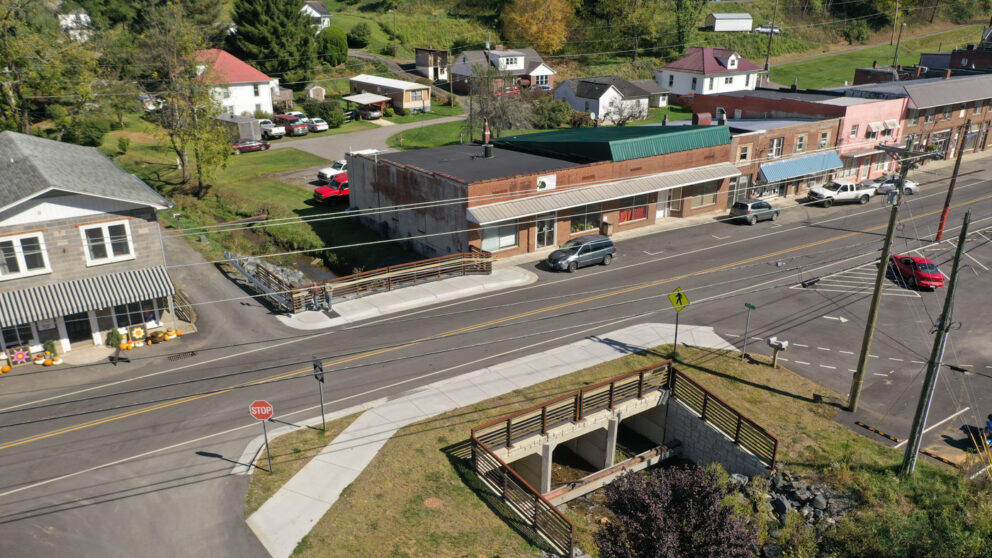
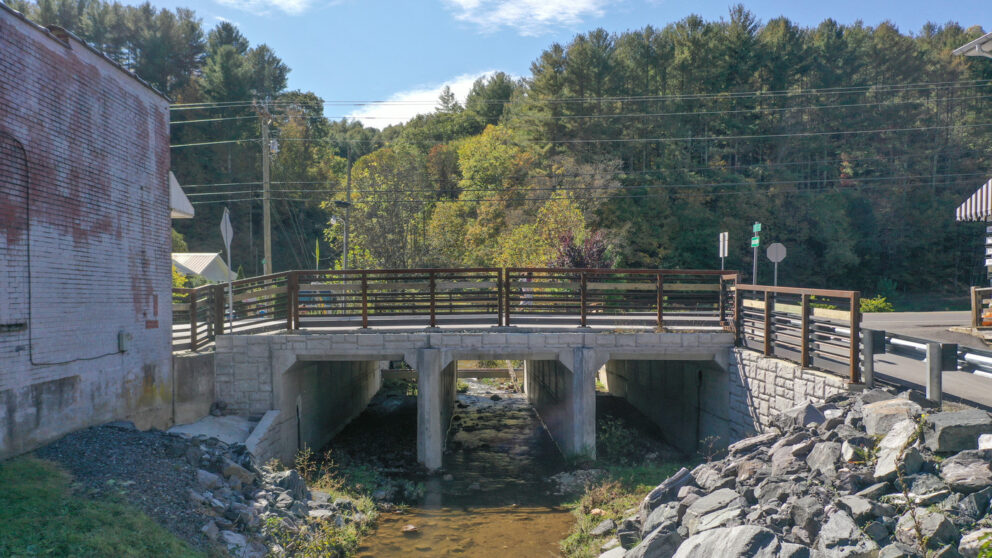
Overview
Timmons Group served as lead designer for this design-build project to replace two bridges and associated roadway work for the North Carolina Department of Transportation (NCDOT). Timmons Group provided design management, roadway design, hydraulics design and permitting, erosion control, traffic control, utility coordination, surveys, and SUE. The bridge replacements for this project included:
State Route 1540 over South Fork of the New River in Watauga County: Replacement of a state route bridge which was the only access to a railroad theme park, an important recreational and economic destination for the local community. The scope of the project also included realigning State Route 1540 to improve safety for the traveling public. Timmons Group’s design simplified the alignment and profile, reducing the need for borrow on the project, saving construction time and construction cost.
This significant South Fork of the New River waterway called for advanced hydraulics design and scour design as part of the overall structural analysis. Timmons Group also sized the hydraulic opening, allowing for a pedestrian walkway to be accommodated under the structure. The realigned route crossed another waterway serviced by a culvert section and the team provided hydraulic modeling for that as well. All work was planned to occur within the Time of Year (TOY) Restrictions for trout.
Timmons Group also designed a new traffic signal and improvements to be integrated into adjacent Route 321.
State Route 194 over Old Field Branch Waterway in Ashe County: Replacement of the main waterway crossing bridge along an old railroad corridor in the Town of Lansing, NC. As both a primary road and the main thoroughfare through the town, maintaining traffic during construction was a key requirement of the project. To meet this requirement, the client called for extensive temporary roadway work and a temporary bridge. Timmons Group developed an alternative maintenance of traffic (MOT) plan, removing the need for the temporary roadway and bridge. Approved through proprietary meetings, the plan reduced projected construction time, resulting in a significant cost savings for NCDOT.
Along with construction of the vehicular bridge, the project also included relocating two pedestrian bridges. Timmons Group served as lead utility coordinator for the project’s extensive utility relocation, with overhead lines and facilities carried by the structure itself.
The entire project was constructed within existing right of way with minimal easements. With buildings on two corners of the project, public involvement was paramount and vibration monitoring was required during construction to ensure no damage occurred to the adjacent properties.